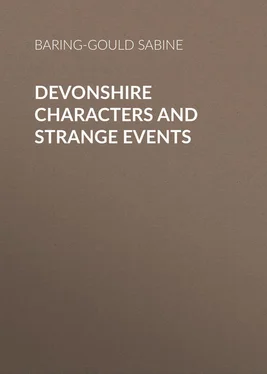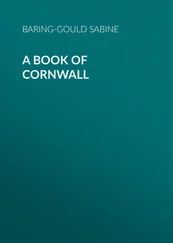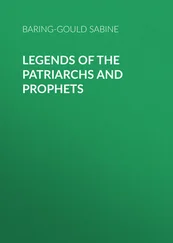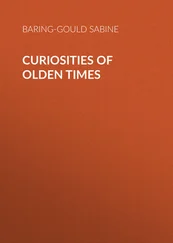Sabine Baring-Gould - Devonshire Characters and Strange Events
Здесь есть возможность читать онлайн «Sabine Baring-Gould - Devonshire Characters and Strange Events» — ознакомительный отрывок электронной книги совершенно бесплатно, а после прочтения отрывка купить полную версию. В некоторых случаях можно слушать аудио, скачать через торрент в формате fb2 и присутствует краткое содержание. Жанр: foreign_antique, foreign_prose, на английском языке. Описание произведения, (предисловие) а так же отзывы посетителей доступны на портале библиотеки ЛибКат.
- Название:Devonshire Characters and Strange Events
- Автор:
- Жанр:
- Год:неизвестен
- ISBN:нет данных
- Рейтинг книги:3 / 5. Голосов: 1
-
Избранное:Добавить в избранное
- Отзывы:
-
Ваша оценка:
- 60
- 1
- 2
- 3
- 4
- 5
Devonshire Characters and Strange Events: краткое содержание, описание и аннотация
Предлагаем к чтению аннотацию, описание, краткое содержание или предисловие (зависит от того, что написал сам автор книги «Devonshire Characters and Strange Events»). Если вы не нашли необходимую информацию о книге — напишите в комментариях, мы постараемся отыскать её.
Devonshire Characters and Strange Events — читать онлайн ознакомительный отрывок
Ниже представлен текст книги, разбитый по страницам. Система сохранения места последней прочитанной страницы, позволяет с удобством читать онлайн бесплатно книгу «Devonshire Characters and Strange Events», без необходимости каждый раз заново искать на чём Вы остановились. Поставьте закладку, и сможете в любой момент перейти на страницу, на которой закончили чтение.
Интервал:
Закладка:
S. Baring-Gould
Devonshire Characters and Strange Events
PREFACE
In treating of Devonshire Characters, I have had to put aside the chief Worthies and those Devonians famous in history, as George Duke of Albemarle, Sir Walter Raleigh, Sir Francis Drake, Sir Joshua Reynolds, the Coleridges, Sir Stafford Northcote, first Earl of Iddesleigh, and many another; and to content myself with those who lie on a lower plane. So also I have had to set aside several remarkable characters, whose lives I have given elsewhere, as the Herrings of Langstone (whom I have called Grym or Grymstone) and Madame Drake, George Spurle the Post-boy, etc. Also I have had to pretermit several great rascals, as Thomas Gray and Nicholas Horner. But even so, I find an embarras de richesses , and have had to content myself with such as have had careers of some general interest. Moreover, it has not been possible to say all that might have been said relative to these, so as to economize space, and afford room for others.
So also, with regard to strange incidents, some limitation has been necessary, and such have been selected as are less generally known.
I have to thank the kind help of many Devonshire friends for the loan of rare pamphlets, portraits, or for information not otherwise acquirable – as the Earl of Iddesleigh, Lady Rosamond Christie, Mrs. Chichester of Hall, Mrs. Ford of Pencarrow, Dr. Linnington Ash, Dr. Brushfield, Capt. Pentecost, Miss M. P. Willcocks, Mr. Andrew Iredale, Mr. W. H. K. Wright, Mr. A. B. Collier, Mr. Charles T. Harbeck, Mr. H. Tapley Soper, Miss Lega-Weekes, who has contributed the article on Richard Weekes; Mrs. G. Radford, Mr. R. Pearse Chope, Mr. Rennie Manderson, Mr. M. Bawden, the Rev. J. B. Wollocombe, the Rev. W. H. Thornton, Mr. A. M. Broadley, Mr. Samuel Gillespie Prout, Mr. S. H. Slade, Mr. W. Fleming, Mrs. A. H. Wilson, Fleet-Surgeon Lloyd Thomas, the Rev. W. T. Wellacott, Mr. S. Raby, Mr. Samuel Harper, Mr. John Avery, Mr. Thomas Wainwright, Mr. A. F. Steuart, Mr. S. T. Whiteford, and last, but not least, Mr. John Lane, the publisher of this volume, who has taken the liveliest interest in its production.
Also to Messrs. Macmillan for kindly allowing the use of an engraving of Newcomen’s steam engine, and to Messrs. Vinton & Co. for allowing the use of the portrait of the Rev. John Russell that appeared in Bailey’s Magazine .
I am likewise indebted to Miss M. Windeatt Roberts for having undertaken to prepare the exhaustive Index, and to Mr. J. G. Commin for placing at my disposal many rare illustrations.
For myself I may say that it has been a labour of love to grope among the characters and incidents of the past in my own county, and with Cordatus, in the Introduction to Ben Jonson’s Every Man out of his Humour , I may say that it has been “a work that hath bounteously pleased me; how it will answer the general expectation, I know not.”
I am desired by my publisher to state that he will be glad to receive any information as to the whereabouts of pictures by another “Devonshire Character,” James Gandy, born at Exeter in 1619, and a pupil of Vandyck. He was retained in the service of the Duke of Ormond, whom he accompanied to Ireland, where he died in 1689. It is said that his chief works will be found in that country and the West of England.
Jackson of Exeter, in his volume The Four Ages , says: “About the beginning of the eighteenth century was a painter in Exeter called Gandy, of whose colouring Sir Joshua Reynolds thought highly. I heard him say that on his return from Italy, when he was fresh from seeing the pictures of the Venetian school, he again looked at the works of Gandy, and that they had lost nothing in his estimation. There are many pictures of this artist in Exeter and its neighbourhood. The portrait Sir Joshua seemed most to value is in the Hall belonging to the College of Vicars in that city, but I have seen some very much superior to it.”
Since then, however, the original picture has been taken from the College of Vicars, and has been lost; but a copy, I believe, is still exhibited there, and no one seems to know what has become of the original.
Not only is Mr. Lane anxious to trace this picture, but any others in Devon or Ireland, as also letters, documents, or references to this artist and his work.
HUGH STAFFORD AND THE ROYAL WILDING
Hugh Stafford, Esq., of Pynes, born 1674, was the last of the Staffords of Pynes. His daughter, Bridget Maria, carried the estate to her husband, Sir Henry Northcote, Bart., from whom is descended the present Earl of Iddesleigh. Hugh Stafford died in 1734. He is noted as an enthusiastic apple-grower and lover of cyder.
He wrote a “Dissertation on Cyder and Cyder-Fruit” in a letter to a friend in 1727, but this was not published till 1753, and a second edition in 1769. The family of Stafford was originally Stowford, of Stowford, in the parish of Dolton. The name changed to Stoford and then to Stafford. One branch married into the family of Wollocombe, of Wollocombe. But the name of Stowford or Stafford was not the most ancient designation of the family, which was Kelloway, and bore as its arms four pears. The last Stafford turned from pears to apples, to which he devoted his attention and became a connoisseur not in apples only, but in the qualities of cyder as already intimated.
To a branch of this family belonged Sir John Stowford, Lord Chief Baron in the reign of Edward III, who built Pilton Bridge over the little stream of the Yeo or Yaw, up which the tide flows, and over which the passage was occasionally dangerous. The story goes that the judge one day saw a poor market woman with her child on a mudbank in the stream crying for aid, which none could afford her, caught and drowned by the rising flood, whereupon he vowed to build the bridge to prevent further accident. The rhyme ran: —
Yet Barnstaple, graced though thou be by brackish Taw,
In all thy glory see that thou not forget the little Yaw.
Camden asserts that Judge Stowford also constructed the long bridge over the Taw consisting of sixteen piers. Tradition will have it, however, that towards the building of this latter two spinster ladies (sisters) contributed by the profits of their distaffs and the pennies they earned by keeping a little school.
I was travelling on the South Devon line some years ago after there had been a Church Congress at Plymouth, and in the same carriage with me were some London reporters. Said one of these gentry to another: “Did you ever see anything like Devonshire parsons and pious ladies? They were munching apples all the time that the speeches were being made. Honour was being done to the admirable fruit by these worthy Devonians. I was dotting down my notes during an eloquent harangue on ‘How to Bring Religion to Bear upon the People’ when chump, chump went a parson on my left; and the snapping of jaws on apples, rending off shreds for mastication, punctuated the periods of a bishop who spoke next. At an ensuing meeting on the ‘Deepening of Personal Religion’ my neighbour was munching a Cornish gilliflower, which he informed me in taste and aroma surpassed every other apple. I asked in a low tone whether Devonshire people did not peel their fruit before eating. He answered leni susurro that the flavour was in the rind.”
Cyder was anciently the main drink of the country people in the West of England. Every old farmhouse had its granite trough (circular) in which rolled a stone wheel that pounded the fruit to a “pummice,” and the juice flowed away through a lip into a keeve. Now, neglected and cast aside, may be seen the huge masses of stone with an iron crook fastened in them, which in the earliest stage of cyder-making were employed for pressing the fruit into pummice. But these weights were superseded by the screw-press that extracted more of the juice.
Читать дальшеИнтервал:
Закладка:
Похожие книги на «Devonshire Characters and Strange Events»
Представляем Вашему вниманию похожие книги на «Devonshire Characters and Strange Events» списком для выбора. Мы отобрали схожую по названию и смыслу литературу в надежде предоставить читателям больше вариантов отыскать новые, интересные, ещё непрочитанные произведения.
Обсуждение, отзывы о книге «Devonshire Characters and Strange Events» и просто собственные мнения читателей. Оставьте ваши комментарии, напишите, что Вы думаете о произведении, его смысле или главных героях. Укажите что конкретно понравилось, а что нет, и почему Вы так считаете.












